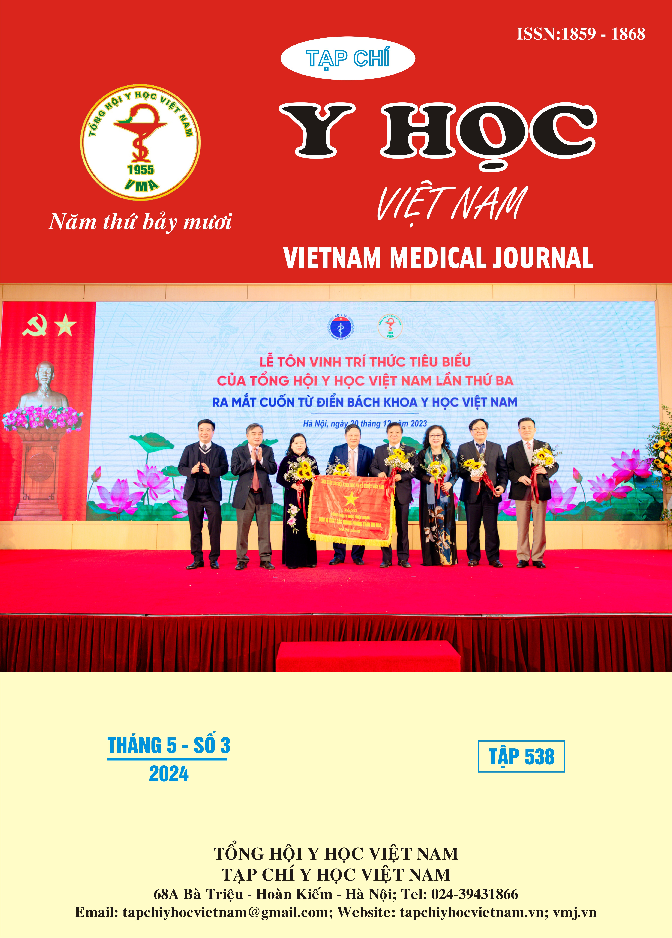STUDYING THE EFFECTS OF THE REMEDY "CHI THONG NHU THAN THANG" IN TREATMENT OF GOUT PATIENTS
Main Article Content
Abstract
Objective: Evaluating the effectiveness of the remedy "Chi thong nhu than thang" in treating gout patients. Subjects and methods: 60 patients regardless of gender or occupation were diagnosed with acute gout or acute exacerbation of chronic gout according to the diagnostic criteria of Modern Medicine and the disease name Rheumatoid Arthritis according to Traditional Medicine. Control group: includes 30 patients treated with Colchicine 1mg for 14 days. Research group: 30 patients were treated with Colchicine 1mg combined with the remedy "Chi thong nhu than thang" for 14 days. Results: After 14 days of treatment: the inflammatory index of patients in the study group and control group decreased with statistical significance (p<0.05). There was no difference between the two groups (p > 0.05). The proportion of patients in the study group treated to lower blood uric acid achieved the target higher than the control group (p > 0.05). Nimodipine scores in both groups improved compared to before treatment (p < 0.001); in which the study group had a better reduction (p < 0.05). The proportion of patients in the study group whose treatment was clearly effective was higher than the control group with p < 0.05. Indicators of hematopoietic function and liver and kidney function did not change with statistical significance before and after treatment with p > 0.05. Conclusion: The remedy "Chi thong nhu than thang" combined with Colchicine 1mg is a safe method and has good effects in treating gout patients through improving inflammatory indices, lowering blood uric acid and improving subsequent symptoms. Traditional medicine
Article Details
Keywords
Traditional medicine, gout, Chi thong nhu than thang
References
2. Y tông kim giám quyển 12 ngoại khoa tâm pháp tổng quyết. Nhà xuất bản Khoa học và công nghệ Y học cổ truyền Trung Quốc, 2017: 840
3. Fietze I, Laharnar N, Obst A, Ewert R, Felix SB, Garcia C, Gläser S, Glos M, Schmidt CO, Stubbe B, Völzke H, Zimmermann S, Penzel T (2019). Prevalence and association analysis of obstructive sleep apnea with gender and age differences - Results of SHIP-Trend. J Sleep Res. Oct;28(5):e12770
4. Kong LD, Yang C, Ge F, Wang HD, Guo YS (2004), “A Chinese herbal medicine Ermiao wan reduces serum uric acid level and inhibits liver xanthine dehydrogenase and xanthine oxidase in mice”, Journal of Ethnopharmacology, 93 pp.325-330
5. Neogi Tuhina, Jansen Tim L. Th A., Dalbeth Nicola et al (2015), 2015 Gout classification criteria: an American College of Rheumatology/European League Against Rheumatism collaborative initiative, Annals of the Rheumatic Diseases, 74(10).p1789
6. 中华人民共和国卫生部(1995)《中药新药临床研究指导原则》第二辑. 中药新药治疗痛风的临床研究指导, 179-183


